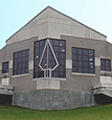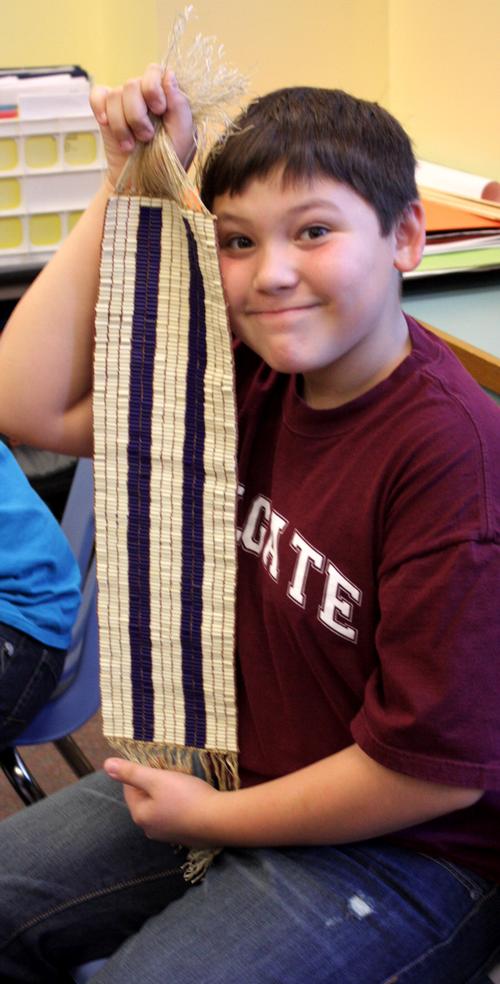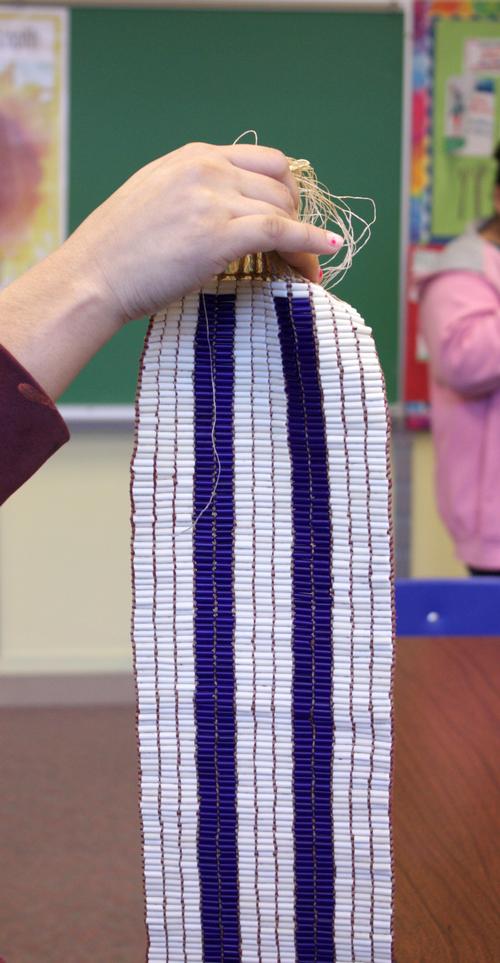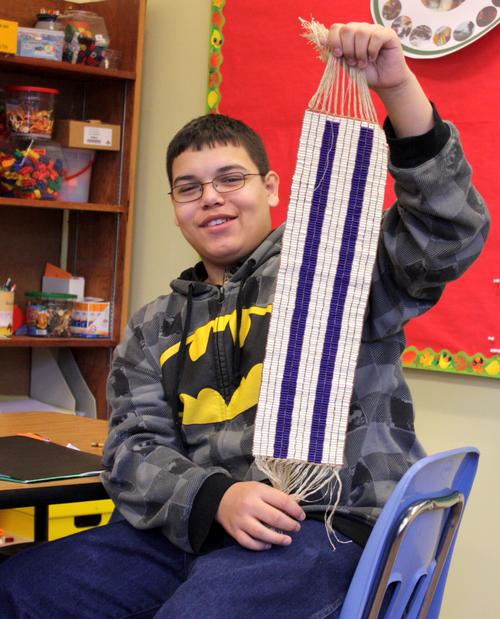Ot’go’a
Wampum Study
Wadeñ nwa’ aweñha’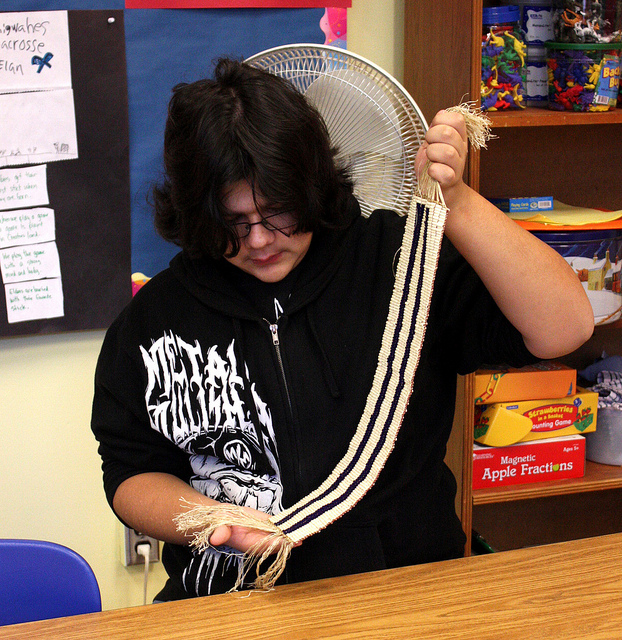
Onondaga Nation- The ONS 8th grade class has been studying about Ot'go'a (wampum) in Mr. Powless’ culture class.
During their study, the class has been learning about Hiawatha’s role in the first wampum as well as the many uses of wampum in Haudenosaunee culture from condoling, invitation, identification, repenting, and recording history and treaties.
William said of the wampum, “We should be thankful for Hiawatha because without him we wouldn’t have all of the wampum we have today.”
One of the wampum belts that the class focused on was the Two Row Wampum belt. The Two Row Wampum belt recorded the agreement between the Dutch and the 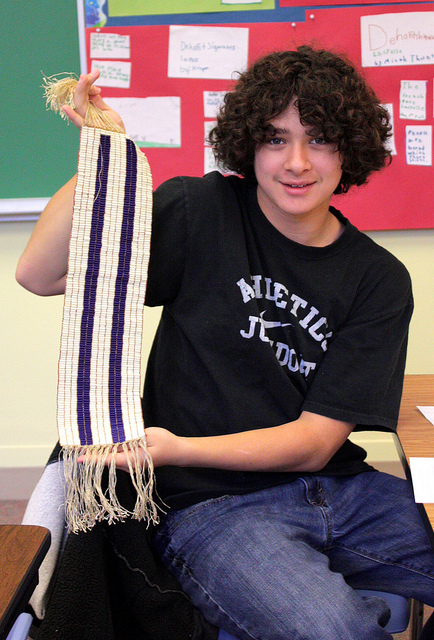 Haudenosaunee in 1613. In that belt, each people are considered equal as they travel together down the river of life. The belt has important lessons about neither government infringing on each other.
Haudenosaunee in 1613. In that belt, each people are considered equal as they travel together down the river of life. The belt has important lessons about neither government infringing on each other.
 Haudenosaunee in 1613. In that belt, each people are considered equal as they travel together down the river of life. The belt has important lessons about neither government infringing on each other.
Haudenosaunee in 1613. In that belt, each people are considered equal as they travel together down the river of life. The belt has important lessons about neither government infringing on each other.Connor said of Two Row, “The message in the belt says that governments shouldn’t be interfering with each other.”
The class found out later how relevant the Two Row wampum belt was in modern times. The Onondaga Nation has had the role of Wampum Keeper since the beginning of the Haudenosaunee so long ago. Since that time, an Onondaga has kept our sacred Wampum.
That was until 1890 when New York State felt that we were no longer capable of keeping the belts safe and pressured the Onondagas to give up the belts. The class watched a film made by the Onondaga Nation in 1974 about the importance of the State returning the belts called “Keepers of the Wampum.” In the film Onondagas explained why the belts should come back to Onondaga.
Connor added, “The (Two Row) belt is a great argument why the State should not have the belts and should return them to us.”
The class was grateful that the belts were returned in 1989. 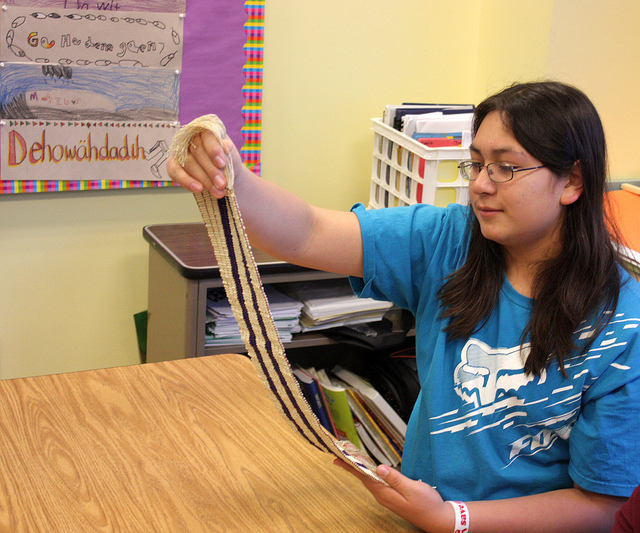 The class watched a film by Chief Irving Powless Jr. called, “The Day the Belts Came Back.” The film chronicled the efforts by the Onondaga Nation in bringing the belts back home after 92 years. There the students saw how happy people were to see the belts again.
The class watched a film by Chief Irving Powless Jr. called, “The Day the Belts Came Back.” The film chronicled the efforts by the Onondaga Nation in bringing the belts back home after 92 years. There the students saw how happy people were to see the belts again.
 The class watched a film by Chief Irving Powless Jr. called, “The Day the Belts Came Back.” The film chronicled the efforts by the Onondaga Nation in bringing the belts back home after 92 years. There the students saw how happy people were to see the belts again.
The class watched a film by Chief Irving Powless Jr. called, “The Day the Belts Came Back.” The film chronicled the efforts by the Onondaga Nation in bringing the belts back home after 92 years. There the students saw how happy people were to see the belts again.Mr. Powless added, “It is great to see how interested the kids are about our belts. It is important history to learn.”


